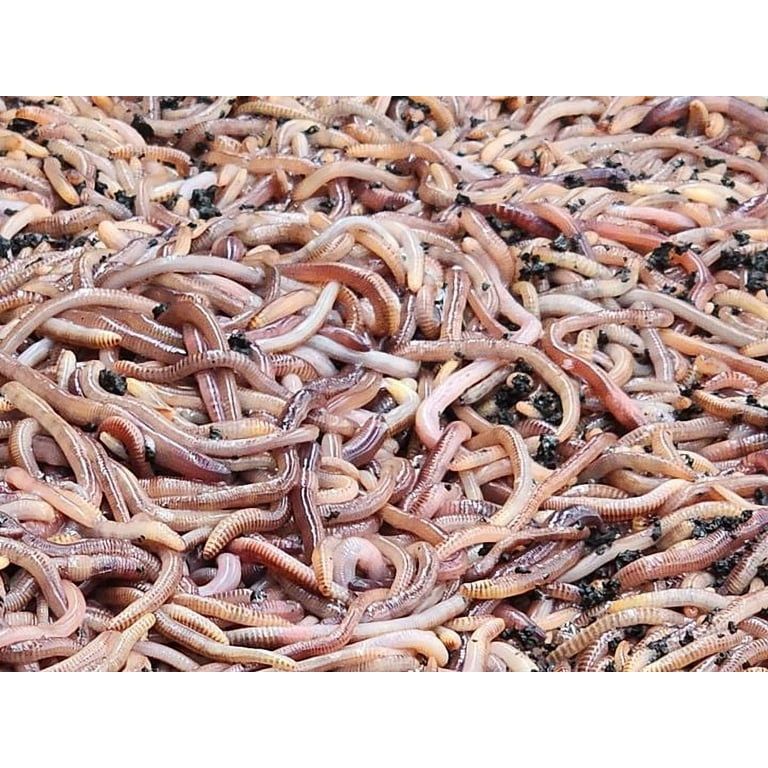Efficient red worms: Best for composting
Efficient red worms: Best for composting
Blog Article
Boost Soil Wellness Naturally With Red Wigglers
The combination of red wigglers right into dirt administration techniques provides a compelling technique for boosting soil health and wellness normally. These earthworms not only change natural waste into valuable vermicompost, yet their all-natural actions likewise promote improved dirt structure, oygenation, and nutrient accessibility. Nonetheless, understanding the intricacies of establishing up and maintaining an effective vermicomposting system is important to completely take advantage of their advantages. Discovering the vital actions and prospective challenges included can considerably impact the performance of this sustainable technique. What vital elements should be thought about to make the most of the advantages of these exceptional decomposers?
Benefits of Red Wigglers

Furthermore, red wigglers enhance soil structure by creating channels as they burrow via the planet. This task improves aeration and drainage, helping with origin development and making sure that plants get sufficient oxygen and moisture. Additionally, the spreadings created by red wigglers are high in nutrients such as nitrogen, phosphorus, and potassium, which are vital for plant development.
Red wigglers additionally help in the reduction of hazardous pathogens and pests by outcompeting them for resources, even more adding to a healthier dirt setting. Their existence can bring about a decrease in the need for synthetic plant foods and chemicals, promoting lasting agricultural techniques. In general, integrating red wigglers right into soil management methods supplies an all-natural and efficient means of boosting dirt vitality, thus sustaining durable plant growth and farming productivity.
Establishing Vermicomposting
Establishing a vermicomposting system is a sensible method to harness the remarkable advantages of red wigglers in improving soil health. red wigglers. To start, select an ideal container-- ideally, a plastic or wood bin with a cover to keep wetness and temperature. The container should have water drainage holes to stop excess water build-up
Following, prepare bedding product, which functions as an environment for the worms. Appropriate products include shredded paper, cardboard, or coconut coir. Go for a depth of 4-6 inches to give ample space for the worms.
As soon as the bedding is in location, present the red wigglers, usually at a ratio of one extra pound of worms for every single square foot of surface in the bin. Following this, include kitchen scraps such as vegetables and fruit peels, coffee premises, and crushed eggshells. Stay clear of meat, dairy, and oily foods, as these can draw in bugs.
(eisenia fetida for sale)
Caring for Your Worms
Preserving the health of your red wigglers is necessary for a flourishing vermicomposting system. Correct treatment makes sure that these advantageous microorganisms can efficiently damage down organic matter and enrich your dirt.
Feeding your worms is another crucial facet of their care. Red wigglers flourish on kitchen scraps such as fruit and veggie peels, coffee grounds, and crushed eggshells.
Temperature administration is crucial; worms prefer a range of 55 to 77 degrees Fahrenheit. Ensure the bin is not exposed to route sunshine or severe cold. Finally, regularly inspect for indicators of distress, such as too much worm movement or uncommon smells, to attend to any type of prospective issues quickly. By following these standards, you will promote a healthy community for your red wigglers.
Making Use Of Worm Spreadings in Dirt
Worm castings, frequently described as "black gold," are an effective amendment that can significantly improve soil wellness and fertility. red wigglers. These nutrient-rich, organic plant foods are created by red wigglers during their food digestion process, causing a carefully textured product that is useful for plants and dirt alike
Integrating worm spreadings right into your soil boosts its structure, boosting aeration and water retention. This is specifically beneficial for sandy soils that drain pipes as well quickly, in addition to hefty clay soils that can come to be compacted. Worm spreadings are replete with crucial nutrients, including nitrogen, phosphorus, and potassium, which are essential for plant growth.

Inevitably, the use of worm castings fosters a thriving community within the soil, bring about much healthier plants and more sustainable horticulture techniques.
Tips for Successful Composting
Effective composting needs careful focus to a few essential concepts that can dramatically boost the high quality of the end product. Balance is important; preserve a proper proportion of environment-friendly materials (nitrogen-rich) to brown products (carbon-rich), preferably around 1:3. This balance facilitates reliable disintegration and lessens odors.
2nd, oygenation plays an important role. Routinely transforming the garden compost pile enhances oxygen circulation, which speeds up microbial activity and accelerate the composting process. Go for a stack size of at the very least 3 feet by three feet to retain heat, which further advertises decomposition.
(Lake Rhodhiss Worms)
Dampness content is one more crucial factor; the compost should perspire however not soaked. A good guideline of thumb is to accomplish a wetness level similar to that of a wrung-out sponge. Way too much water can lead to anaerobic conditions, while inadequate can slow down decomposition.
Lastly, monitor the temperature level of the compost. A temperature range of 130 ° F to 160 ° F indicates active composting and aids eliminate microorganisms and review weed seeds. By adhering to these concepts, you will certainly produce a nutrient-rich compost that supports dirt health and wellness and enhances plant development.
Verdict
Including red wigglers right into gardening techniques improves dirt health and wellness via all-natural processes. These worms add to the malfunction of natural materials, resulting in nutrient-rich vermicompost that boosts soil framework and fertility.
Report this page